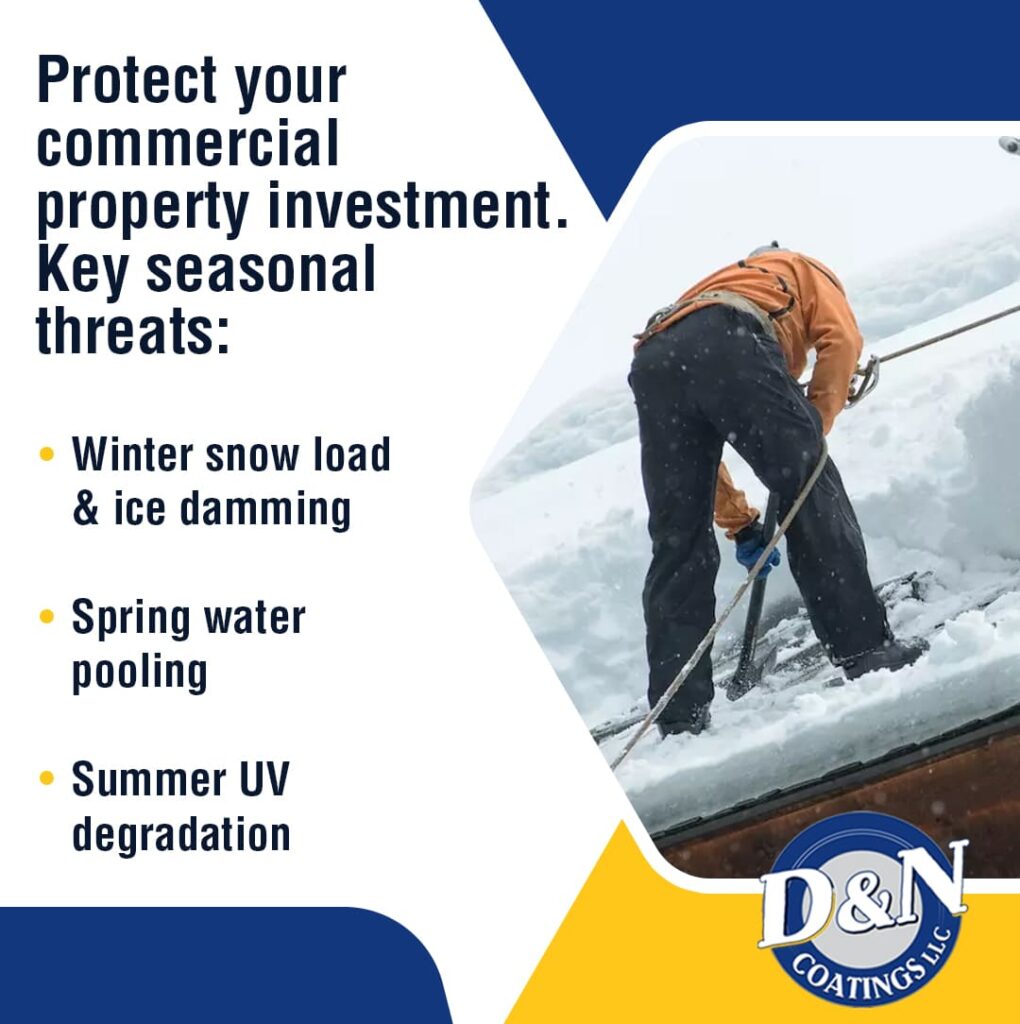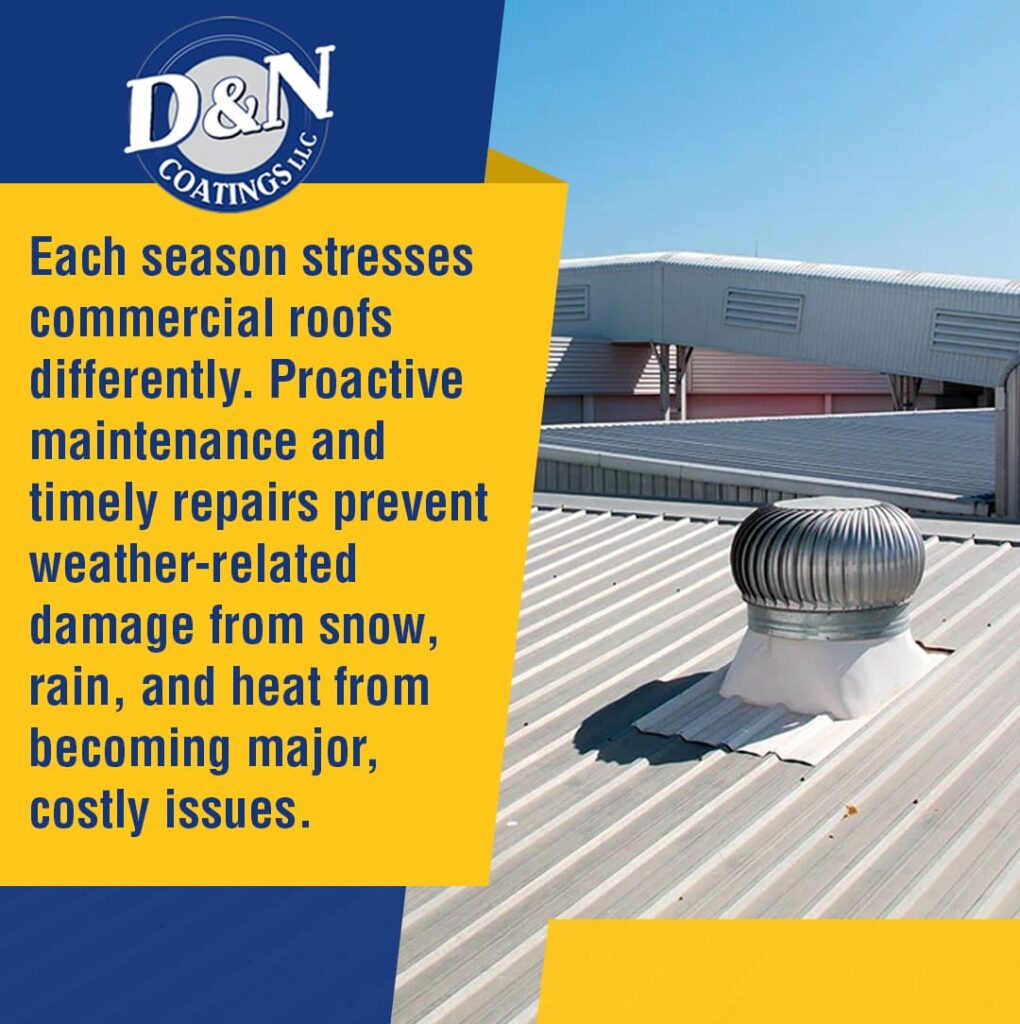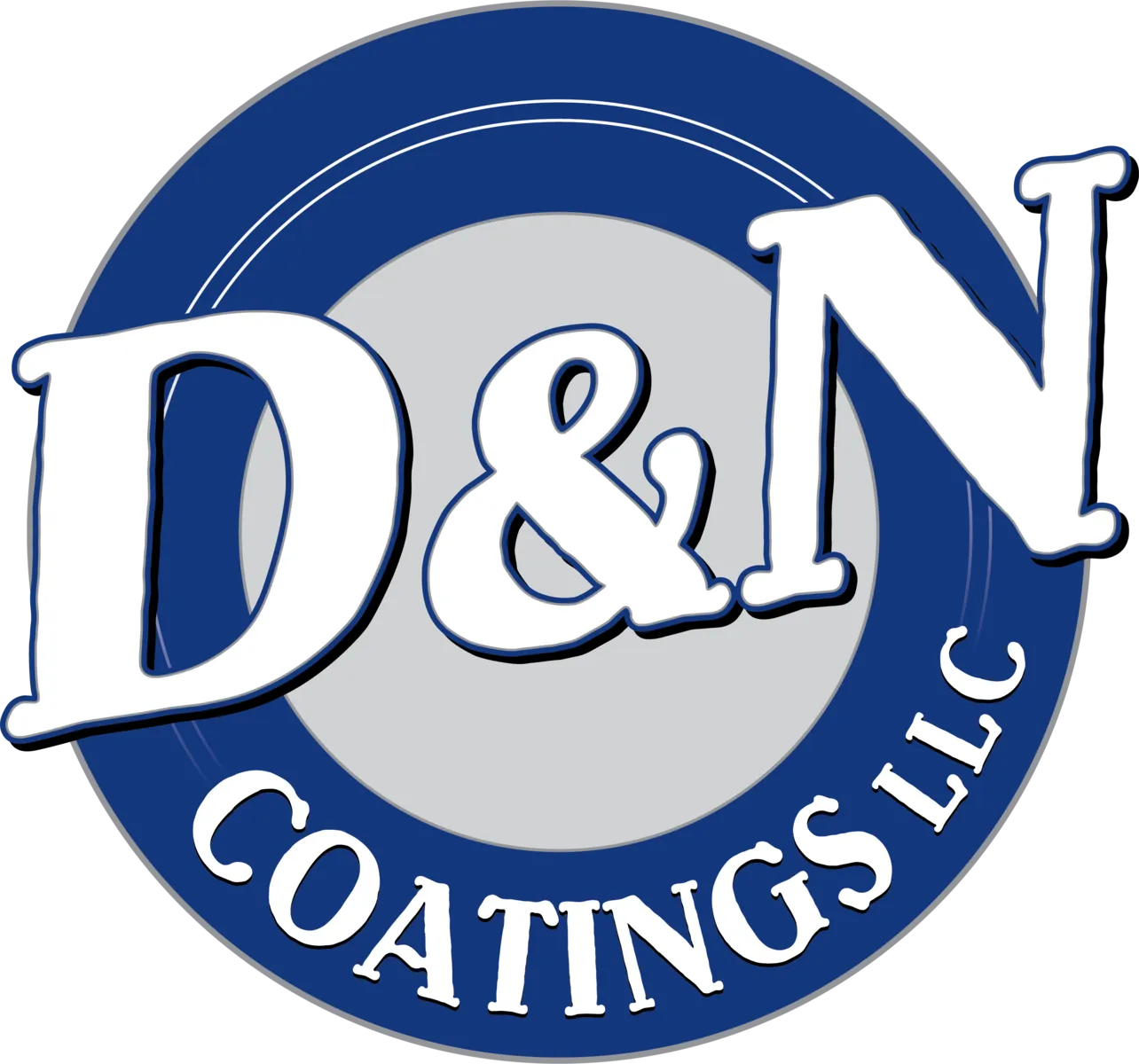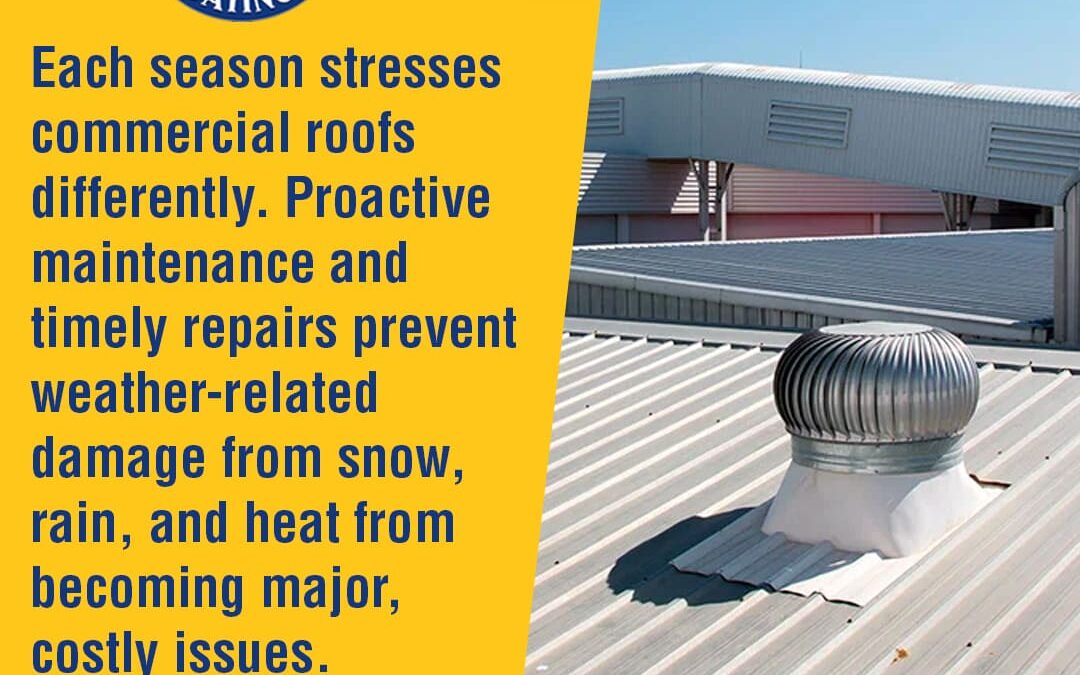D&N Coatings specializes in providing reliable solutions for commercial flat roof repair and maintenance. Seasonal weather can have a major impact on flat roofs, affecting their durability, performance, and overall lifespan. As a trusted commercial roofing contractor, our team helps business owners protect their properties with tailored services designed to address the challenges of each season.
Understanding how different weather conditions, such as heavy rainfall or intense summer heat, affect flat roofs is essential for commercial building owners. By identifying potential issues early and scheduling timely flat roof repair, property managers can prevent costly damage and maintain the integrity of their roofing systems. Here we’ll explore the seasonal effects on flat roofs and practical strategies for keeping commercial properties secure throughout the year.
Introduction to Flat Roof Vulnerabilities
Flat roofs play an important role in many commercial properties, offering space efficiency and design flexibility. Their low-slope design, however, makes them more vulnerable to seasonal weather changes compared to pitched roofs.
Understanding Flat Roof Structures
Flat roofs are designed with a minimal slope, which allows them to cover large areas of a building without requiring complex framing. This design is efficient for commercial spaces but can create challenges for water drainage. Water tends to pool in low spots if the roofing system is not monitored or maintained regularly, which can lead to leaks or material degradation over time.

Many commercial flat roofs are installed and maintained by a trusted commercial roofing contractor, and the materials commonly used include TPO, EPDM, and PVC. Each material has specific advantages. TPO offers durability and heat reflection, EPDM provides flexibility and weather resistance, and PVC gives strong chemical and fire protection. Even with high-quality materials, seasonal conditions can affect performance, so careful observation is important for long-term durability.
Seasonal Stress Factors
Flat roofs experience stress from temperature changes, precipitation, and wind exposure.Hot summer days cause roofing materials to expand, while colder temperatures in winter make them contract. Over time, this cycle can create small cracks or seams in the roof membrane.
Rainfall and snow add weight and increase the potential for leaks, while wind can lift edges or loosen sections of the roofing material. These conditions gradually affect the roof’s integrity, which is why property owners often turn to a roofing contractor for preventive measures and commercial flat roof repair when damage occurs. By recognizing these seasonal stress factors, you can maintain the roof’s reliability and extend its lifespan.
Seasonal Weather Challenges and Their Effects
Flat roofs face different challenges with each season, and understanding these effects can help you manage maintenance and repairs more effectively. Each type of weather brings unique stress to the roofing system, and addressing these challenges promptly can protect your investment.
Winter Weather
Winter brings snow and ice that can add considerable weight to flat roofs. Accumulated snow may remain on the roof for long periods, and ice can form in low spots, creating pressure on the roof membrane. Ice dams can allow water to seep into the structure or create stress on the roof deck.
Detecting these issues early is important, and working with a commercial roofing contractor can help identify vulnerable areas before serious damage occurs. Regular inspections and timely flat roof repair during winter can prevent costly leaks and structural problems.
Spring Conditions
Spring often comes with heavy rainfall, which can lead to stormwater pooling on flat roofs. Standing water increases the risk of leaks and accelerates wear on roofing membranes. Snowmelt from the winter season can exacerbate these issues, making spring inspections essential. Scheduling preventive measures and commercial flat roof repair, if needed, can help maintain the roof’s durability and prevent water-related damage.
Summer Heat Exposure
Summer temperatures create expansion and contraction cycles in roofing materials. Constant heat exposure can make membranes brittle and reduce flexibility, increasing the likelihood of cracks.
UV rays can further degrade roofing surfaces over time, which may lead to accelerated wear. A commercial roofing contractor can evaluate these effects and recommend maintenance or repairs to keep the roof performing reliably.
Autumn Debris and Maintenance Concerns
During autumn, fallen leaves, twigs, and other debris can block drains and scuppers, causing water to pool in low areas. If not removed, this accumulation can damage the membrane and prepare the roof for winter problems.
Cleaning debris and checking drainage in the fall helps the roof handle seasonal changes and reduces the need for emergency flat roof repair during harsh weather.
Warning Signs of Seasonal Roof Damage
Recognizing early warning signs of roof damage can help you take action before minor issues turn into costly repairs. Paying attention to these indicators allows you to plan flat roof repair or maintenance with guidance from a reliable commercial roofing contractor.
Water Damage Indicators
Standing water is a clear sign that your flat roof is struggling with drainage. Soft spots on the roof surface can indicate weakened areas, and leaks may appear in ceilings or walls below. Addressing these issues promptly reduces the risk of more extensive water damage and maintains the roof’s performance.
Structural Deformation
Sagging or bubbling areas develop when the roof experiences prolonged stress from weather conditions. Heavy snow, ice, or pooling water can cause the roof deck or membrane to deform. These changes are a warning that the roof may need professional assessment and commercial flat roof repair to restore its stability.
Membrane Deterioration
Cracks, blisters, and separation of seams are signs that the roofing membrane is deteriorating due to temperature extremes and repeated seasonal stress. Left untreated, these issues can allow moisture to penetrate the roof, creating more serious structural problems. Working with a skilled commercial roofing contractor ensures that membrane damage is repaired efficiently, protecting the building from further risks.
Preventive Strategies for Flat Roof Longevity
Maintaining your flat roof throughout the year helps reduce the impact of seasonal weather and extends the lifespan of the roofing system. Taking preventive steps allows you to address minor issues before they escalate, minimizing the need for extensive flat roof repair and keeping your building protected. Planning and implementing these strategies with the support of a skilled commercial roofing contractor makes sure that your roof remains reliable and durable under varying weather conditions.
Proactive Roof Inspections
Regular inspections provide the opportunity to catch problems caused by snow, rain, wind, or heat before they worsen. A qualified commercial roofing contractor can evaluate the roof’s overall condition, detect leaks, and identify areas showing signs of wear.
Seasonal inspections help in scheduling repairs efficiently and also give you insight into the roof’s performance. This approach helps prevent costly damage and makes sure that maintenance is done promptly, maintaining the integrity of your commercial flat roof.
Routine Cleaning and Drainage Maintenance
Leaves, twigs, and other debris can easily accumulate on flat roofs, obstructing gutters, drains, and scuppers. Blocked drainage leads to standing water, which can damage the roofing membrane and increase the risk of leaks.
Performing routine cleaning combined with professional evaluation allows water to flow freely, protecting the roof and preventing premature deterioration. Keeping the drainage system clear supports the roof’s ability to withstand seasonal weather and reduces the frequency of emergency flat roof repair.
Targeted Repairs and Protective Treatments
Applying protective coatings, patching small leaks, and repairing weakened sections helps prevent minor issues from developing into major problems. These measures improve the roof’s resistance to water penetration and temperature fluctuations.
Collaborating with a commercial roofing contractor makes sure that repairs are performed correctly and customized to the material type, whether TPO, EPDM, or PVC, extending the roof’s lifespan.
Energy-Saving Measures
Reflective roof coatings reduce heat absorption during hot weather, lowering temperature stress on roofing materials. Seasonal preparation, such as applying coatings before extreme weather, can also contribute to energy efficiency in your building.
Implementing these measures preserves the roof’s durability and can also reduce energy costs over time, providing additional value for your commercial property.

Partnering with a Commercial Roofing Contractor
Selecting the right team for your commercial flat roof is one of the most important decisions a building owner can make. Seasonal weather exposes flat roofs to stress from snow, ice, rainfall, heat, and debris. Without proper attention, these conditions can lead to leaks, structural damage, and premature wear. Working with an experienced commercial roofing contractor helps you address these challenges efficiently and maintain the long-term durability of your roof.
Key Qualities in a Contractor
A reliable contractor brings extensive experience with flat roof repair and understands how seasonal changes affect different roofing materials. They can identify weak points, recommend proactive maintenance, and address minor issues before they become major problems.
Knowledge of local weather patterns is equally important. A contractor familiar with Missouri’s climate knows how to prepare roofs for heavy winter snow, spring rainfall, summer heat, and autumn debris. This insight provides that repair and maintenance strategies are practical, effective, and tailored to your commercial property.
Additionally, a trustworthy contractor communicates clearly and provides transparent proposals for repair or maintenance services. They work alongside you to explain potential issues, timelines, and solutions, helping you plan and schedule flat roof repair or inspections without disruption to your operations. Choosing a contractor with these qualities offers confidence that your roof will perform well throughout the year.
How D&N Coatings Supports Commercial Owners
At D&N Coatings, we offer seasonal maintenance programs designed specifically for commercial flat roofs. Our team specializes in flat roof repair, inspections, and preventive measures to protect your building from the effects of weather throughout the year. We respond quickly to emergency repairs and storm damage, reducing downtime and safeguarding your property.
Client Testimonials:
- “Does great work! Will get your roofs sealed right up!” – Jason, Springfield, MO.
- “Does great work, knows what he’s doing and will get the job done right!!” – Katelyn Glick, Hartville, MO.
- “Need a roof repair or a new flat roof? This is the best choice for anyone near Hartville, MO! This guy knows what he is doing, does what he says, & gets it done.” – S S, Hartville, MO.
By partnering with a trusted commercial roofing contractor like D&N Coatings, you gain access to expertise in seasonal roof challenges, high-quality materials, and professional service. This partnership helps your flat roof withstand environmental stresses and perform reliably for years, giving you confidence in the safety and protection of your commercial property.
Protect Your Commercial Roof with Reliable Care!
Don’t wait for small issues to turn into costly problems. Partner with D&N Coatings for trusted flat roof repair and maintenance designed for your commercial property. Our experienced team helps you keep your roof durable and secure throughout the year.
Contact us today at (417) 241-3653 to schedule a consultation or request a free estimate. Trust D&N Coatings to provide the care your commercial flat roof needs.

